Magnetism in MRI
1/59
There's no tags or description
Looks like no tags are added yet.
Name | Mastery | Learn | Test | Matching | Spaced |
|---|
No study sessions yet.
60 Terms
The first documented human MR image was obtained on a
15 MHz RF system (0.3T)
MHz to Tesla
MHz/42.57 = T
precessional frequency
the resonant frequency, and is equal to the product of the magnetic field and the gyromagnetic ratio
Larmor equation for precessional frequency
ω0=λ* B0
42.57 MHz per Tesla
The Larmor frequency for Hydrogen (H) at 0.5 Tesla
21.28 Mhz
The resonance frequency in a 1.5 Tesla magnet
63.86 Mhz
The resonance frequency in a 3 Tesla magnet
127.71 Mhz
1 Tesla =
1 Newton per ampere-meter
1 Coulomb=
1 Coulomb = 6.24 X 10^18 electrons
1 amp =
1 Coulomb/second
the principal nucleus utilized in MR imaging and why
hydrogen because of its abundance in the human body, a primary element in both water and fat, two tissue contrasts in MRI.
difference in chemical shift
3.5 parts-per-million (ppm)
frequency difference between fat and water at 1 Tesla, 1.5T, and 3T
147 Hz, 220 Hz, 440 Hz
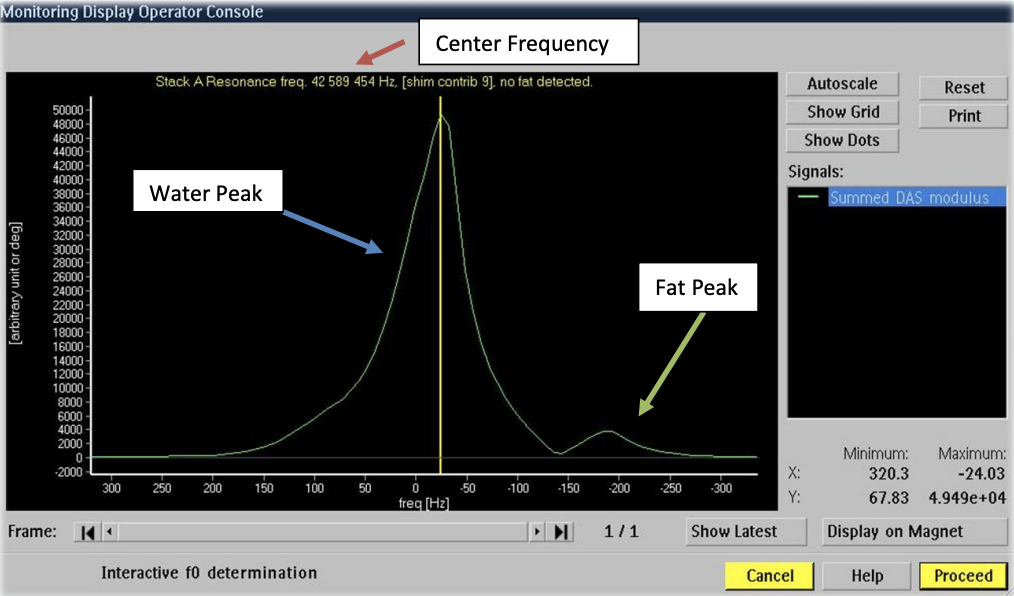
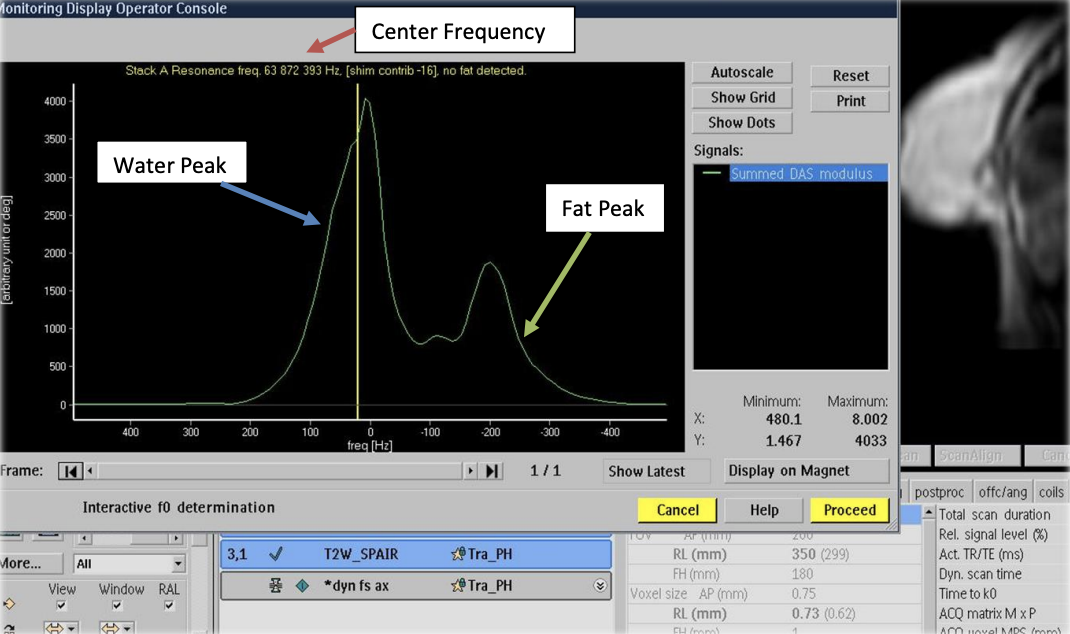
Magnetic field inhomogeneity is expressed in
parts per million (ppm)
10,000 Gauss =
1 tesla
Faraday’s law of induction states
that a changing magnetic field will induce a voltage
most commonly used magnet systems and why
Superconducting magnet systems, due to the high field strength and imaging capabilities
The main magnetic field is parallel to
the long axis of B0
quickest magnets to shut off
Resistive magnets
permanent magnets
blocks of ferromagnetic plates used to generate a magnetic field, and are typically heavy
Ferromagnetic
iron and iron-like substances that can generate a relatively strong magnetic field, Ferromagnetic substances are attracted to the magnetic field
examples of ferromagnetic substances
Stainless Steel, iron, nickel, etc.
dangers of ferromagnetic substances
Ferromagnetic substances are attracted to the magnetic field, can have a missile/torpedo like effect, placing patients, visitors and employees in potential danger
paramagentic
have a very weak magnetic field
examples of paramagnetic
Gadolinium is used as a contrast material because it is paramagnetic.
diamagnetic
Have no magnetic field
examples of diamagnetic
wood, plastic, titanium and copper
The force that an object can be attracted to the magnetic field is reliant upon
The specific ferromagnetic nature/properties of the material
The mass of the projectile
The field strength (Tesla) of the MR system
Magnetic susceptibility
the extent to which a material or tissue becomes magnetized in an external magnetic field.
what happens when iron is placed in an electromagnet
it becomes magnetized. the influence of the electromagnet causes iron to become a strong permanent magnet.
Magnetic permeability
how well a material attracts the imaginary lines of the magnetic field
concept of how magnetic shielding works in MR rooms
iron is permeable and attracts the imaginary lines of the magnetic field. Therefore, the iron shielding does not allow the magnetic field to extend out into the adjacent corridor where patients may be affected.
Magnetic field gradients are
static
net longitudinal magnetization in thermodynamical equilibrium is due to
a tiny excess of protons in the lower energy state. This gives a net polarization parallel to the external field.
protons that align themselves with the direction of the static magnetic field (B0) exist in a _______ energy state than those anti-parallel to the magnetic field.
lower
Hydrogen protons in the anti-parallel state are referred to as
spin down and/or high energy spins
Longitudinal magnetization (or Net Magnetization Vector)
defined as the excess number of hydrogen protons aligned with the static magnetic field
A magnetic vector possesses
attributes of both magnitude (strength) and direction.
The net magnetization vector (NMV) is aligned with what axis
the magnetic field direction, is aligned along the longitudinal axis
A Free Induction Decay (FID) is produced from
a RF pulse.
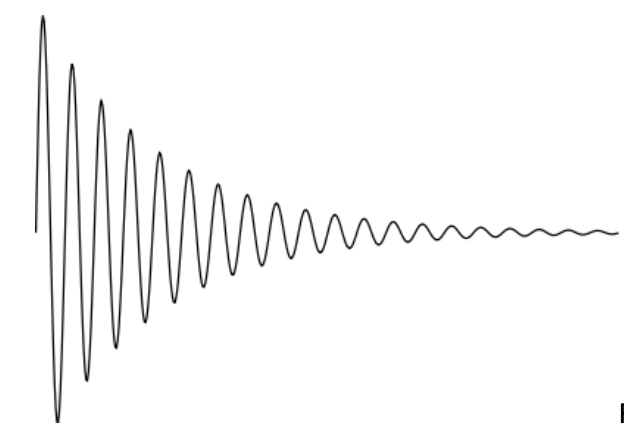

Free Induction Decay
RF Excitation is
the process of moving the net magnetization away from the Z axis
process of RF excitation
The RF pulse stimulates the protons into parallel or anti-parallel alignment
RF stimulates the protons to be in phase
Relaxation begins after the RF is turned off
what happens Immediately following the application of the 90° RF pulse
the precessing protons begin to precess in phase and tip into the transverse plane
Dephasing
occurs after initial RF application, causing phase differences to appear between precessing spins, resulting in decay of transverse magnetization.
transverse magnetization immediately following 90 degree RF pulse
the transverse magnetization is Non-zero.
MRI obtains signal information via
the energy emitted from the patient's tissues following RF excitation pulses
In one T1 relaxation time ______ of the longitudinal magnetization has recovered.
63%
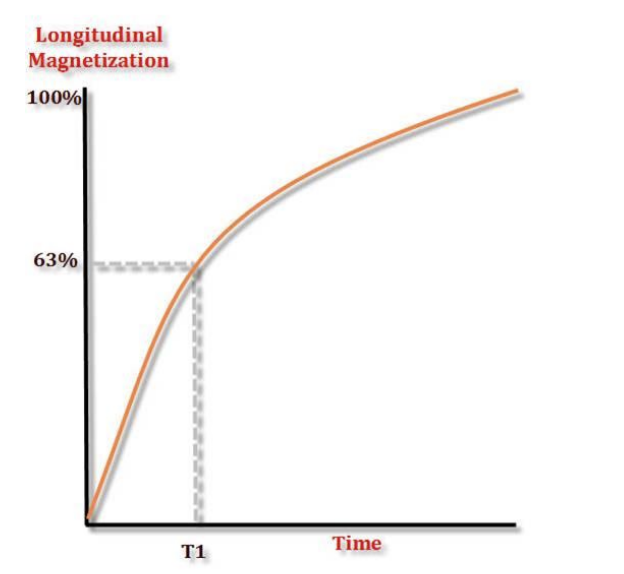
T1 Recovery
T1 relaxation physics and occurs when
nuclei give up their energy to the surrounding tissue, which is known as spin lattice relaxation
spin-lattice relaxation
T1 Relaxation
T1 is synonymous with
the nuclei’ regrowth along longitudinal magnetization, and is also referred to as Z axis regrowth.
Z axis regrowth
the nuclei’ regrowth along longitudinal magnetization (T1)
T1 relaxation time
the recovery of 63% longitudinal magnetization of a specific tissue’s original magnetization
Spin-lattice relaxation
The return of the longitudinal magnetization to its equilibrium value along the Z axis (T1 recovery)
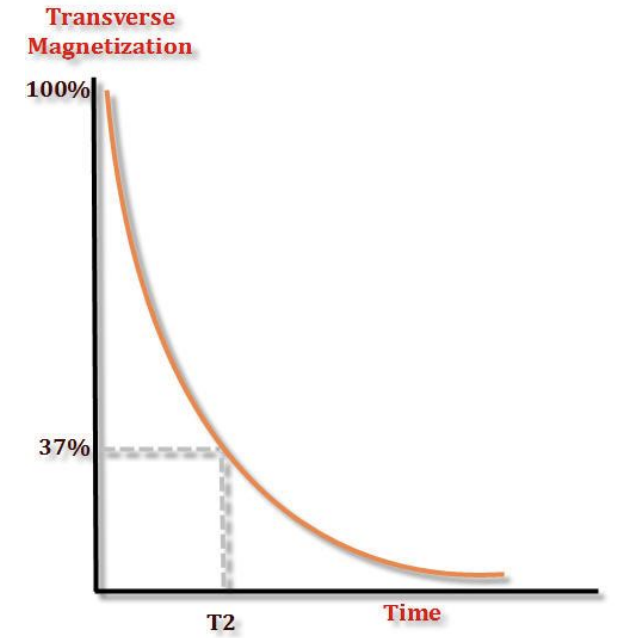
T2 Decay
T2 relaxation time
the time it takes for 63% of the transverse magnetization to decay, or the time it takes the spins to de-phase to 37% of their original value
Spin-spin relaxation
The return of the transverse magnetization to its equilibrium value, zero (T2 decay)
The MRI system component that produces the magnetization of proton spins (alignment)
main magnet
The MRI system component that provides the ability to perform spatial encoding
gradient encoding